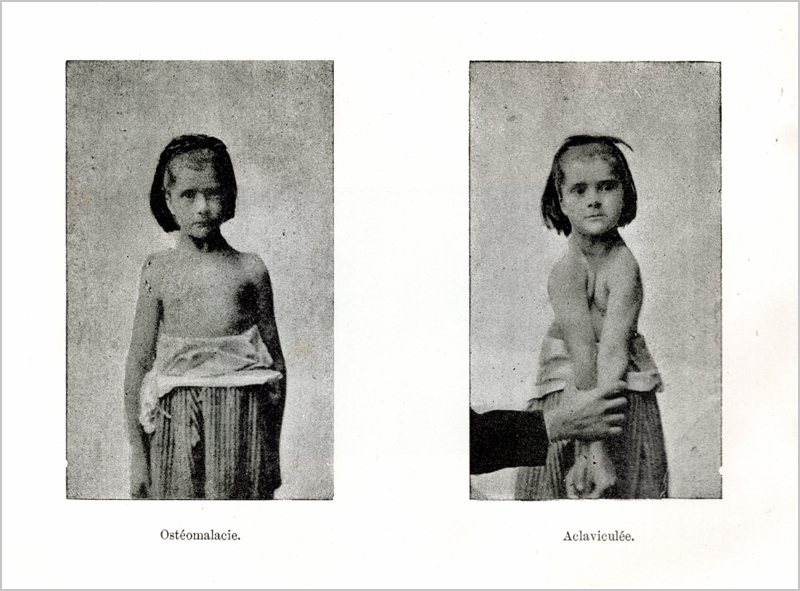
Havre : Impr. du commerce, 1888.
Description : [ii] p., [1]–275 p., [10 l.] pl. ; ill.: 13 phots. ; 25.2 cm.
Photographs : 13 phototype figures on printed leafs (3 paired photos).
Subject : Long bones — Rickets ; syphilis, osteomalacia.
Notes :

Gibert was dedicated to the doctrines of Joseph Parrot (1829-1883), a leading authority on childhood infectious diseases and the discoverer of the primary lesion in pediatric tuberculosis (Ghon's primary lesion). In 1880, Parrot published a paper arguing that most, if not all, cases of rickets were associated with congenital syphilis, based on the osteochondritic lesions and craniotabes he found in 100 autopsies conducted at l'Hospice des Enfants-Assistés in Paris. Clinicians around the world jumped at the opportunity to weigh in on the controversy and advance their names in print. Gibert felt compelled to deploy his considerable clinical experience in defense of Parrot, first in a two-part paper published in the 1883 volume of Gazette hebdomadaire de médecine et de chirurgie (1883), and followed five years later by this obscure and ignored treatise with its wonderful photosemeiotic comparisons of rachitic bone deformation. But a consensus was forming that the cause of rickets, the quaestio vexata of childhood diseases in the nineteenth century, had pernicious roots that were endemic to poverty: poor nutrition, slum conditions, congenital syphilis, hypophosphatemia, and sometimes, sadly, a combination in the same bone mass.
Gibert was blessed with an enviable political stature through his close friendship with Havrais Félix Faure, later president of the republic. In his position as a public health official and councilman of Havre, Gibert was able to establish the first Bureau d'hygiène in France and push through sanitary reforms. He opened the country's first dispensary system, an outpatient model that was quickly adopted by municipalities for treating their indigent populations, primarily children and mothers. He was influential in the formation of the Union des Syndicats medicaux de France, and cofounder of the journal, La Normandie Médicale. Collaborating with Pierre Janet, Gibert investigated the parahypnosis and autosomnabulism of his patient, Léonie Leboulanger, a gifted psychic who, during a seance, received a vision of documents exonerating Dreyfus, but suppressed by Faure, complicating the friendship of the two men. The studies attracted the attention of Charcot who came to Havre to meet the team and their famous patient, earning Gibert the sobriquet, "Charcot de la Normandie."
